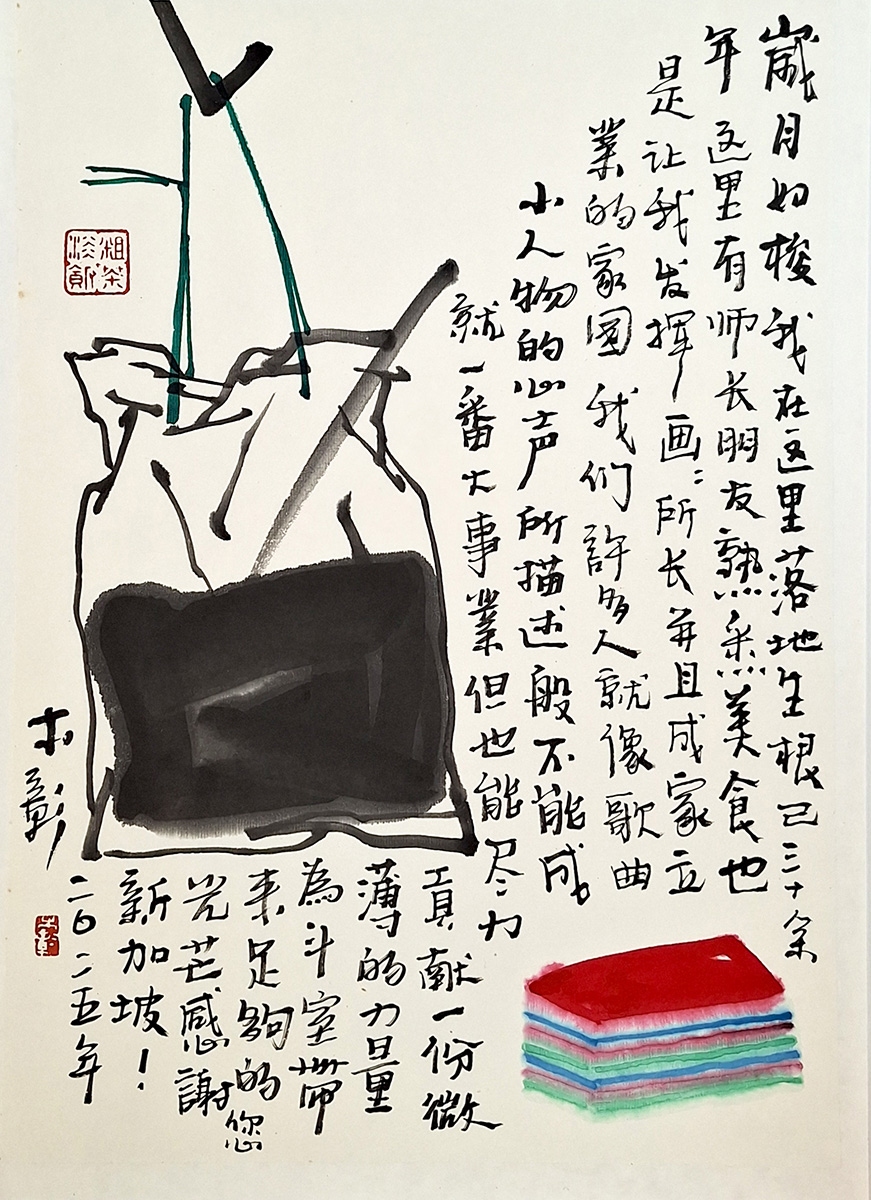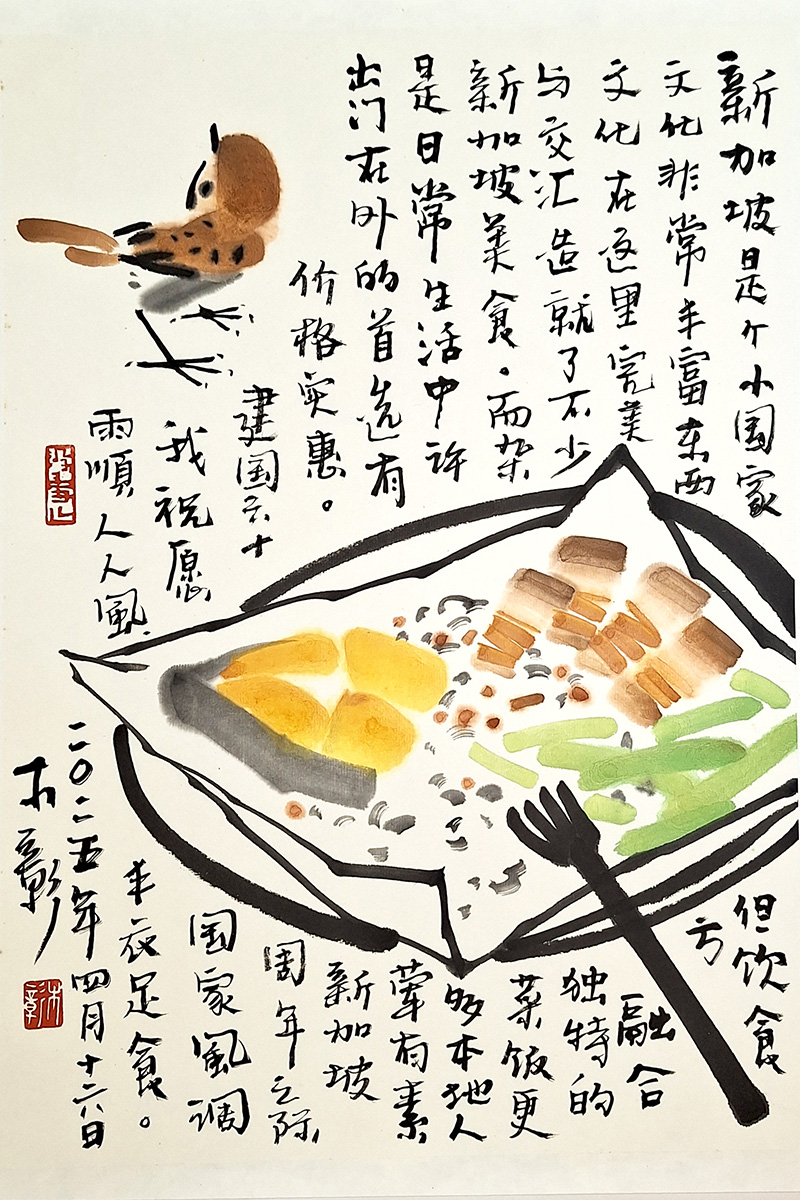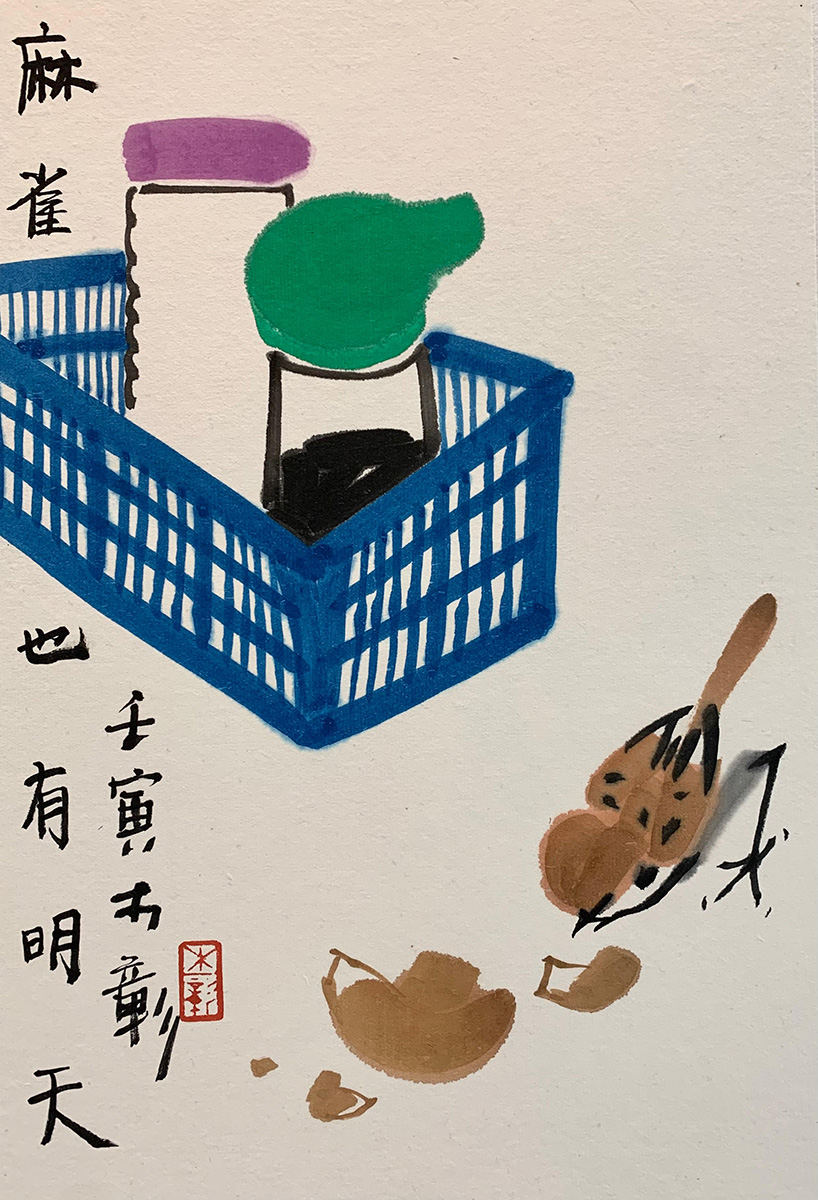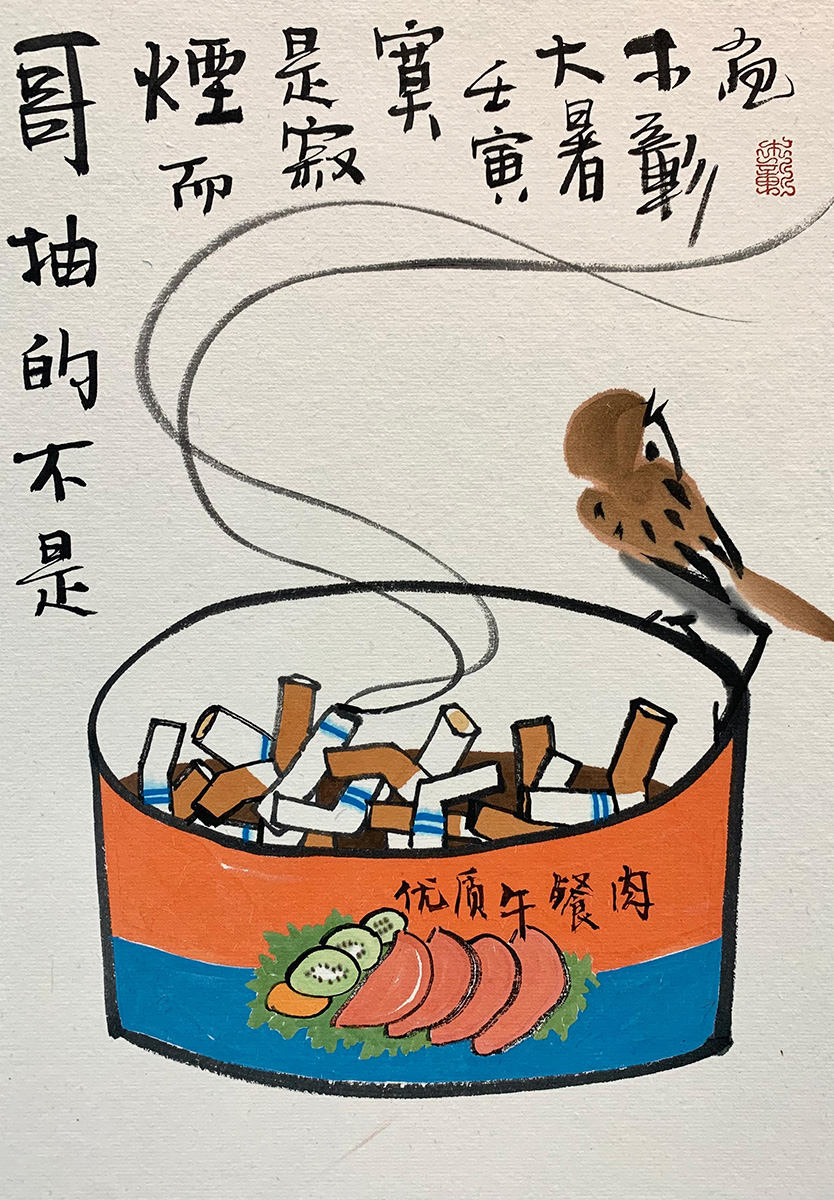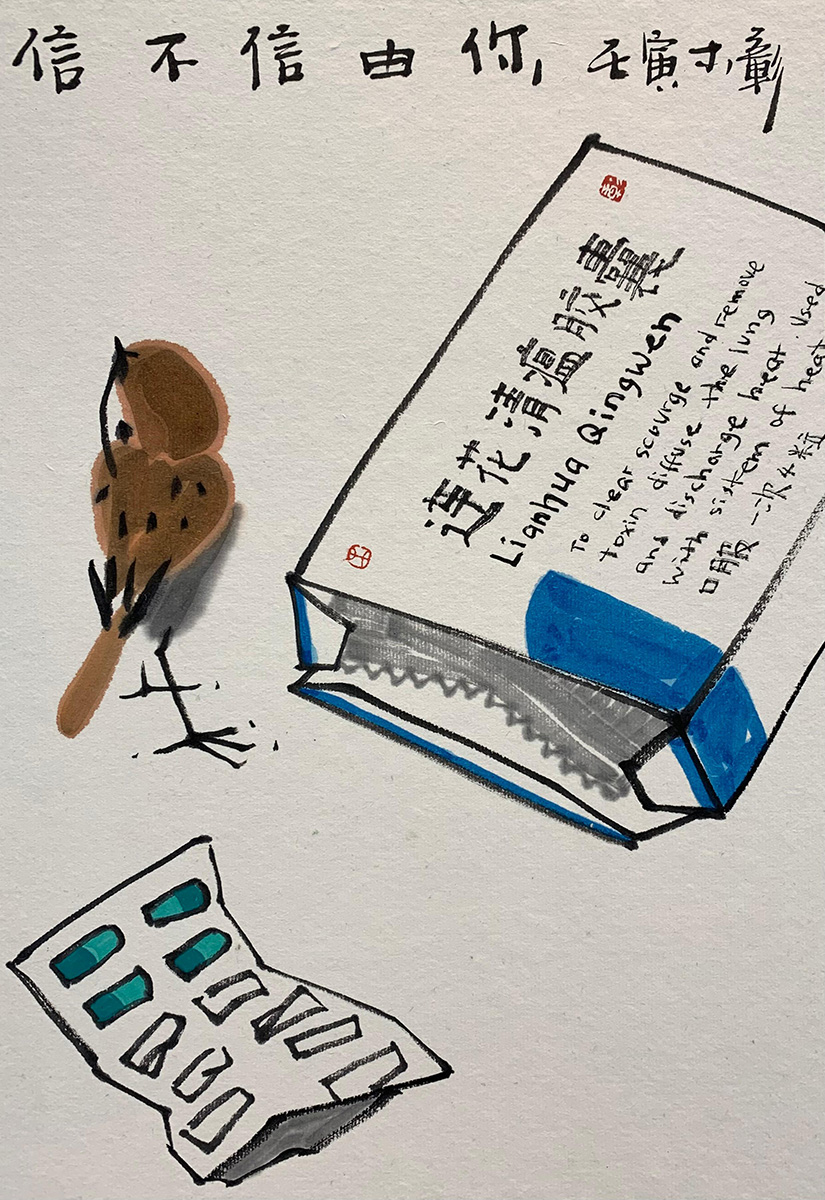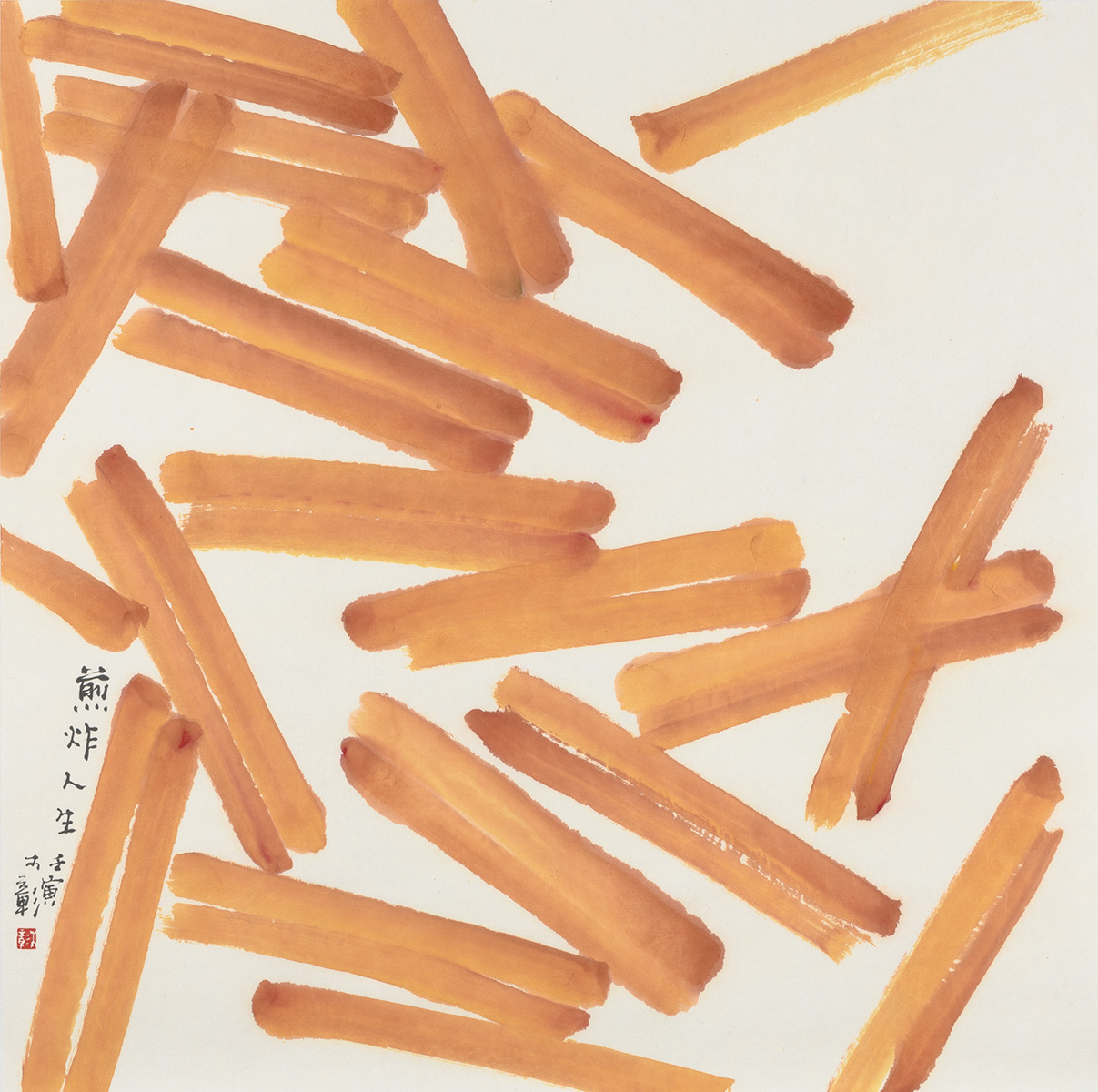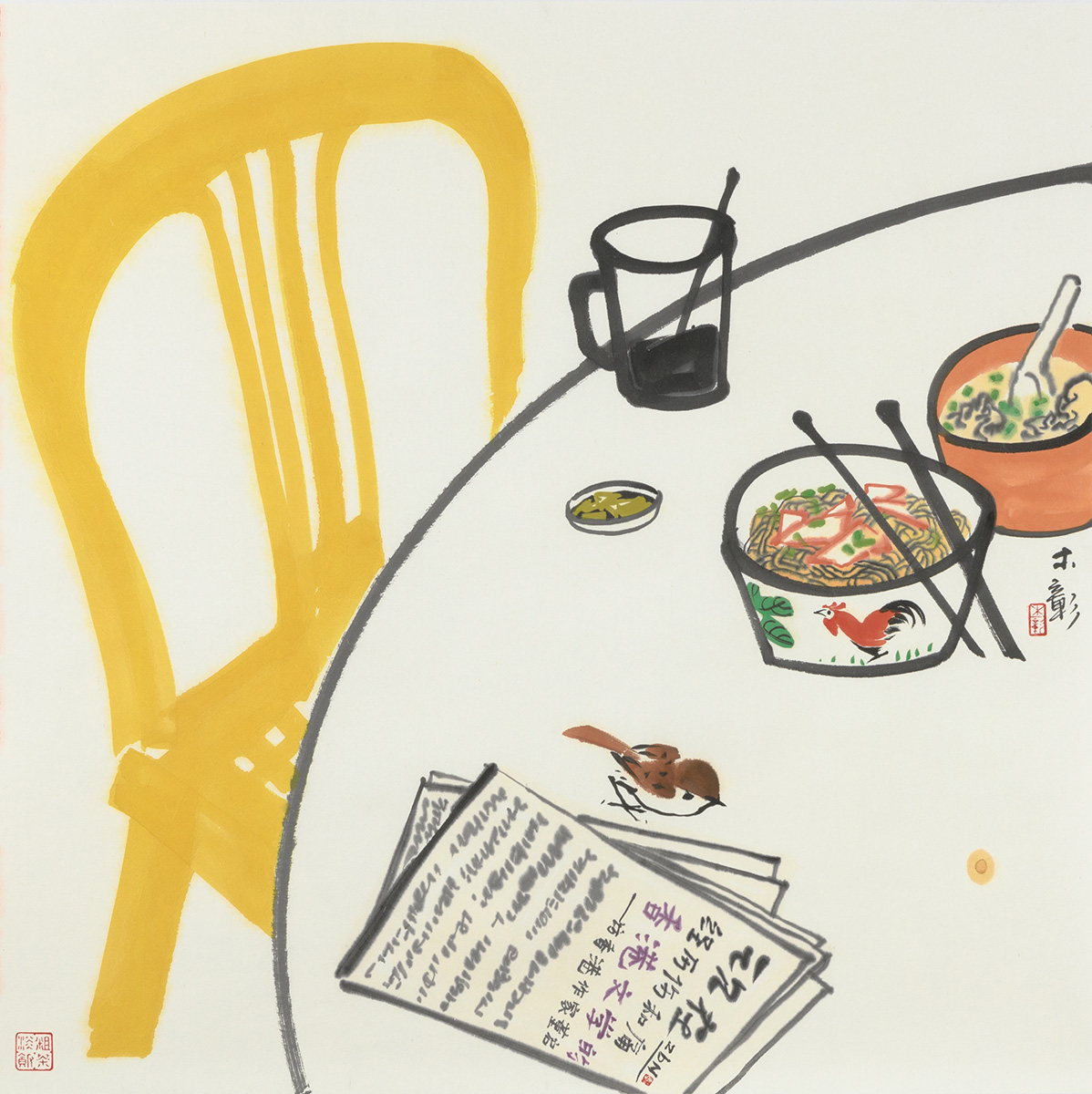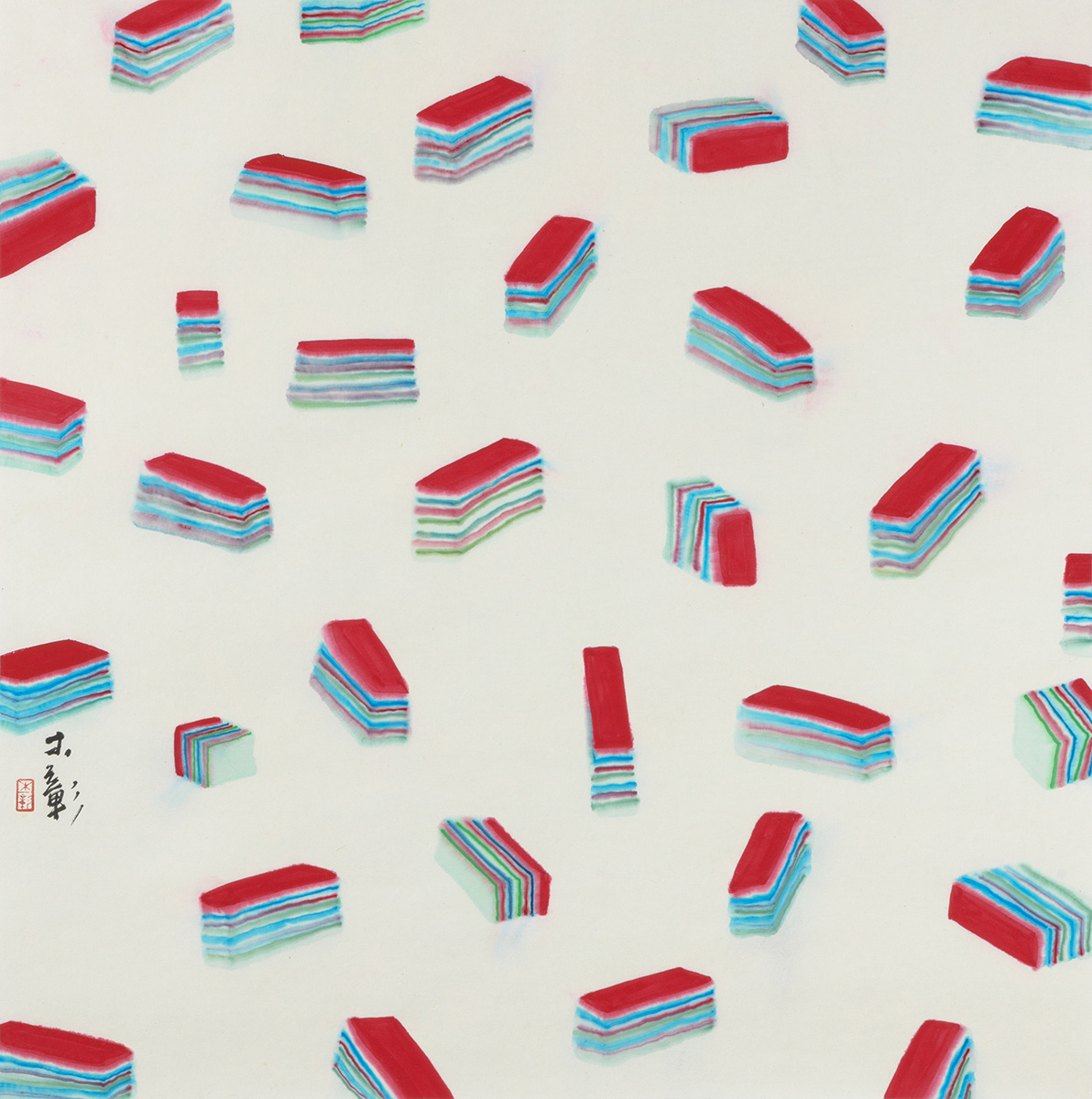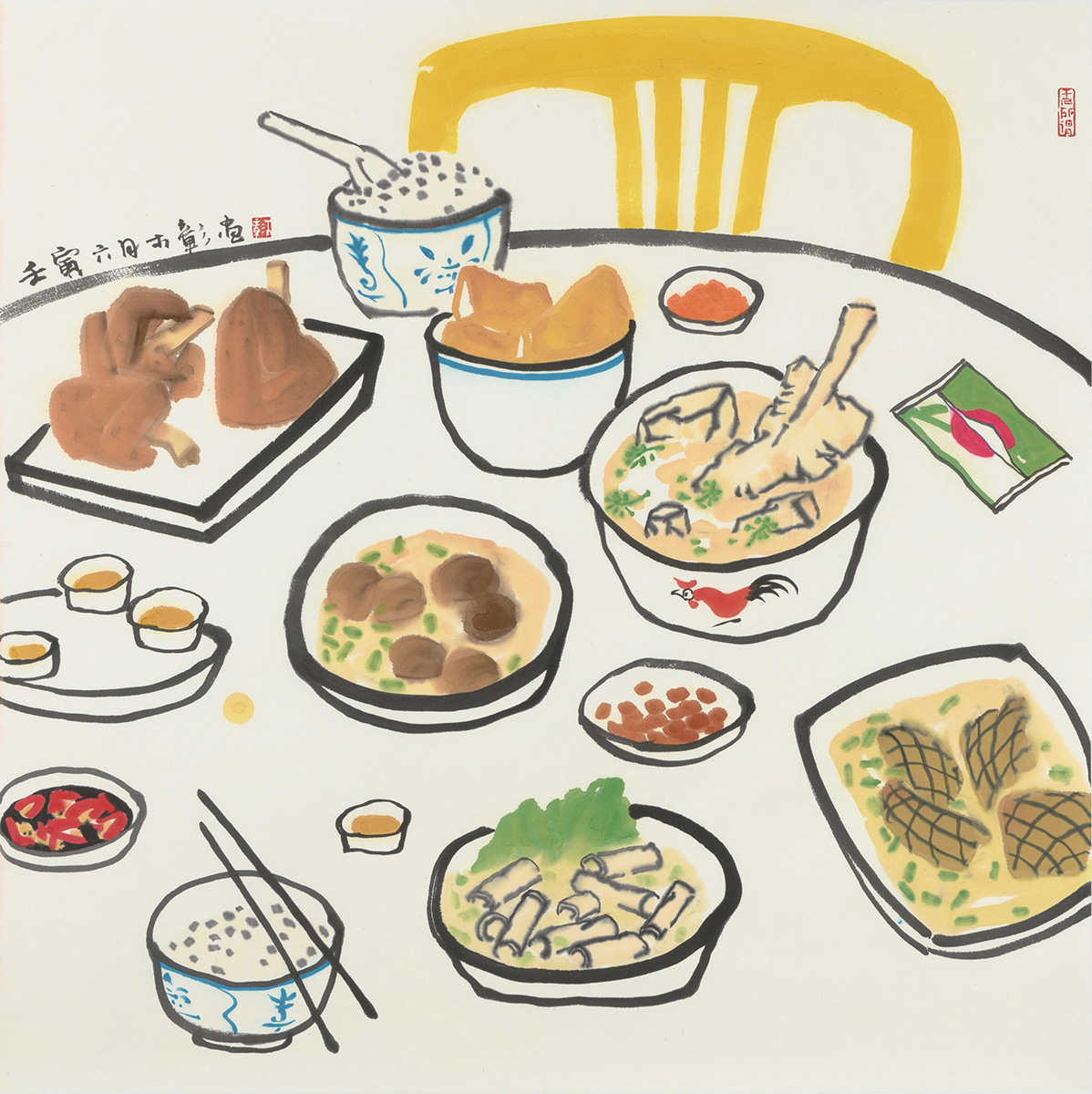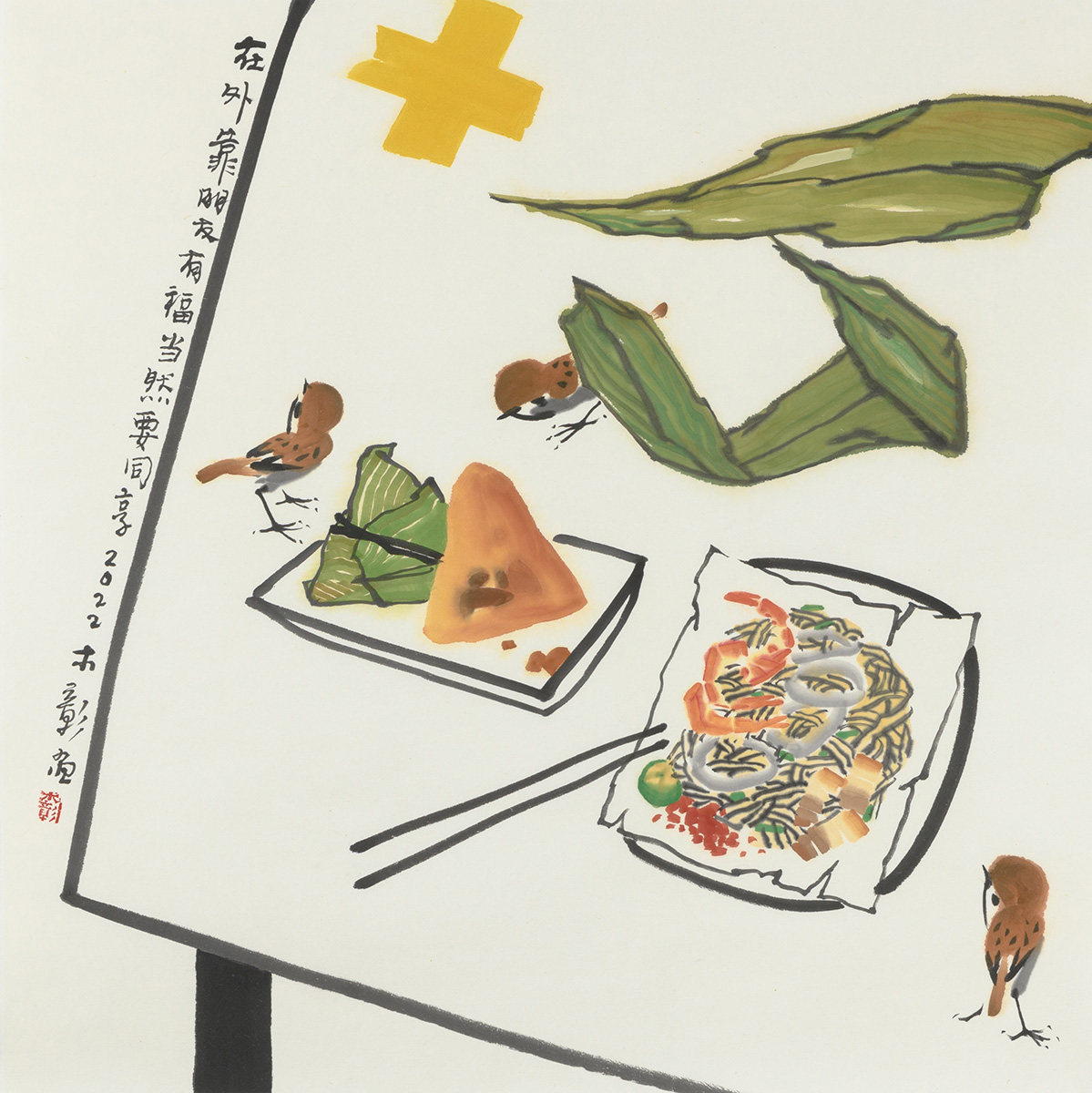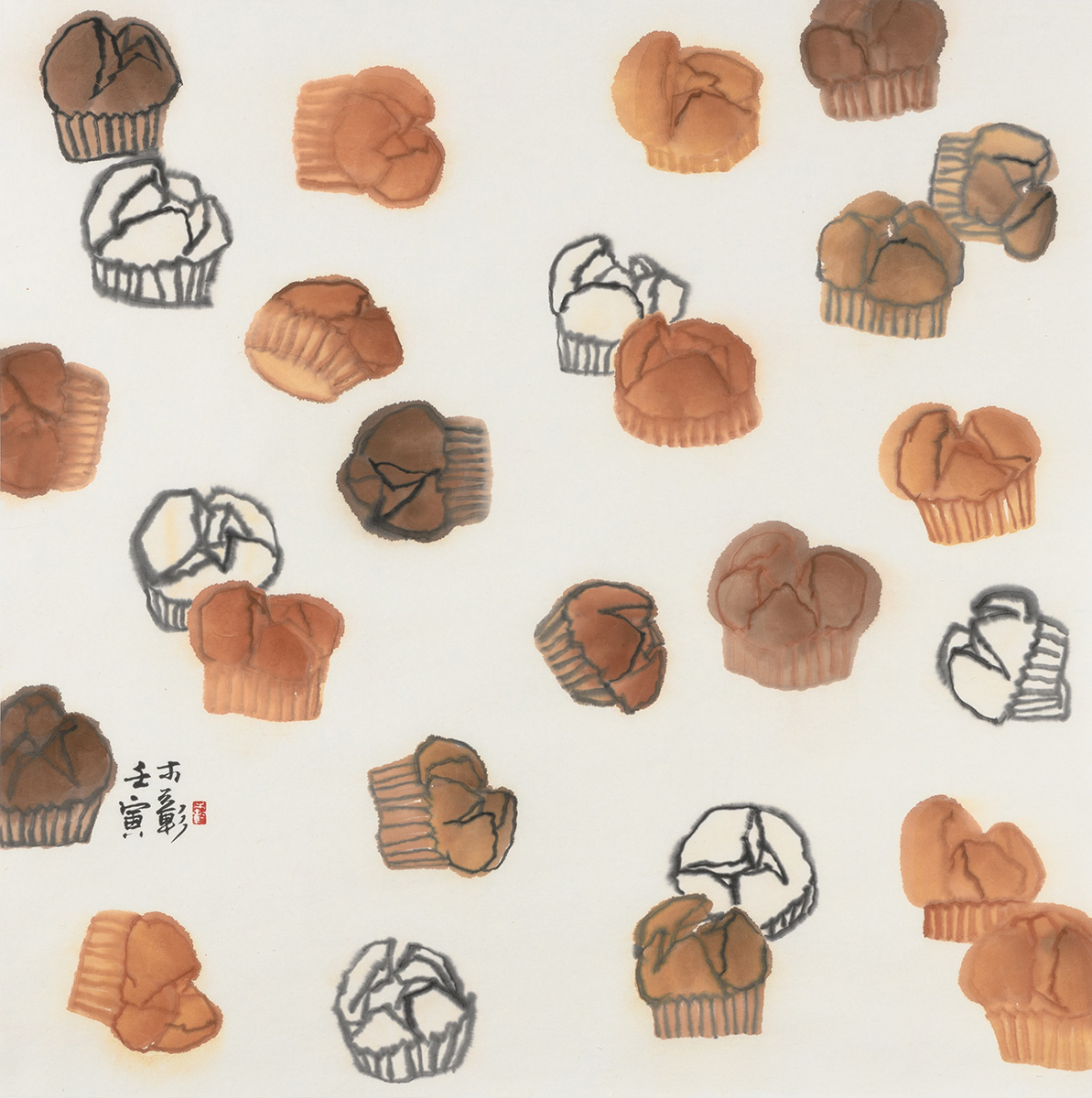LOCAL FOOD本地食物
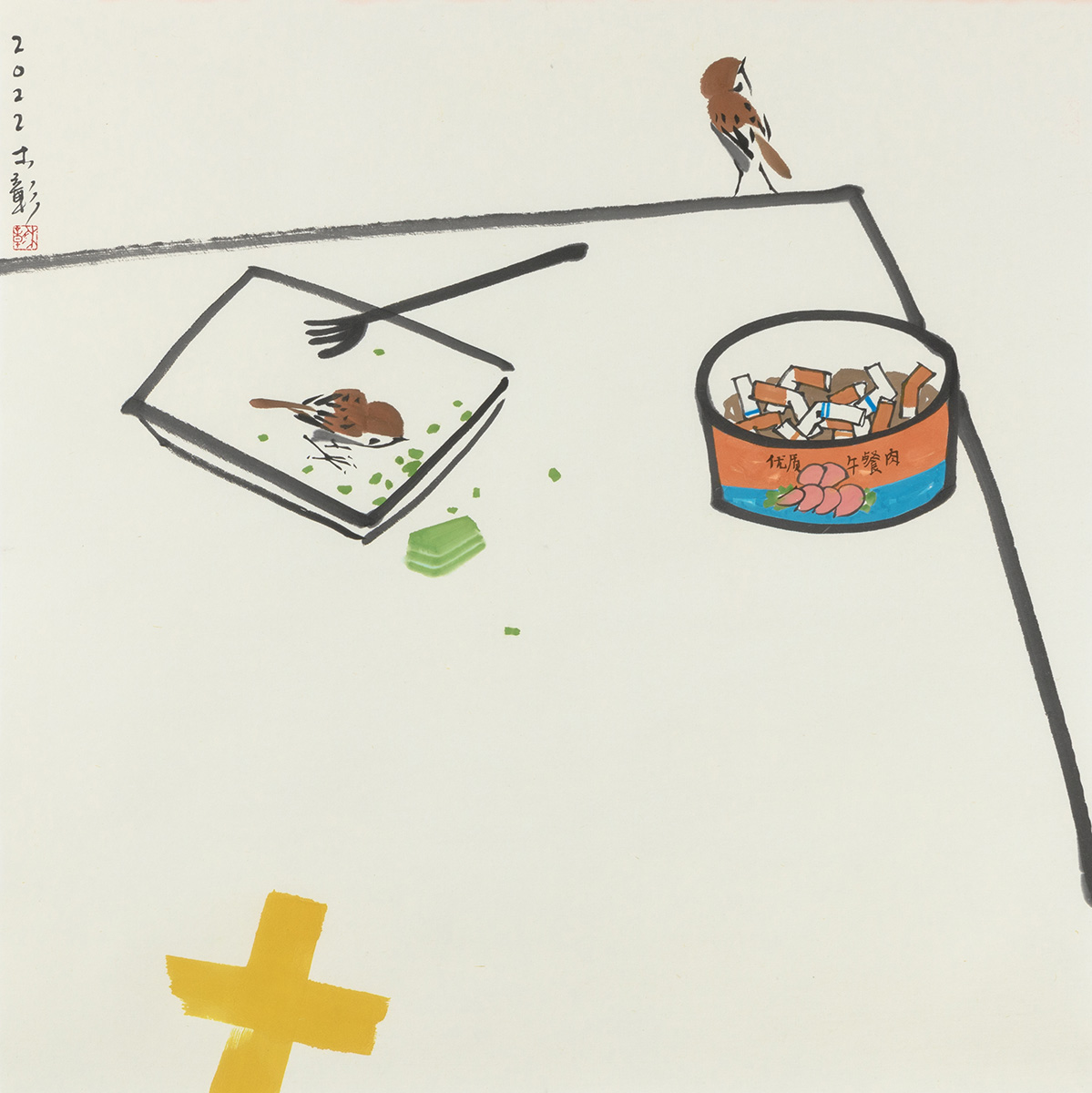
69 x 69 cm
Ink and colour on paper
2022
LOCAL FOOD本地食物
Many Singaporeans enjoy their meals at hawker centres and coffee shops, where the food is affordable and diverse. I'm no exception. If I'm not having home-cooked food, I always like to eat at the hawker centre or kopitiam. It's an integral part of my day, a routine I don't usually think much about.
For a period during the pandemic, dining in at hawker centres and coffee shops was disallowed. I realised then that the wonton mee, char siew rice, youtiao and other local foods l had taken for granted had always been my dependable and comforting allies.
I have used local food as the subject of these works as a natural response to those days. It's also my way of remembering how these foods have accompanied me during the different stages of my life.
The flavours of these foods – sweet, sour, salty, bitter, spicy – are interwoven with the joys and sorrows in my life.
Food needs to be chewed on and savoured slowly, as do happiness and sadness in life.
许多新加坡人喜欢在小贩中心和咖啡店用餐,因为食物既实惠又多样。我也不例外。只要不是在家吃饭,我总喜欢到小贩中心或咖啡店用餐。这已经成为我日常生活中不可或缺的一部分,是一种我平常并不会特别去想的习惯。
在疫情期间,有一段时间禁止在小贩中心和咖啡店堂食。那时我才意识到,那些被我视为理所当然的云吞面、叉烧饭、油条和其他本地食物,其实一直是我可靠而温暖的陪伴。
我以本地食物为主题来创作这些作品,算是对那段日子的自然回应。这也是我记忆的一种方式,记得这些食物如何陪伴我度过人生不同的阶段。
这些食物的滋味 –– 甜、酸、咸、苦、辣 –– 与我生命中的喜怒哀乐交织在一起。
食物需要慢慢咀嚼、细细品味,就像人生的快乐与悲伤一样。


